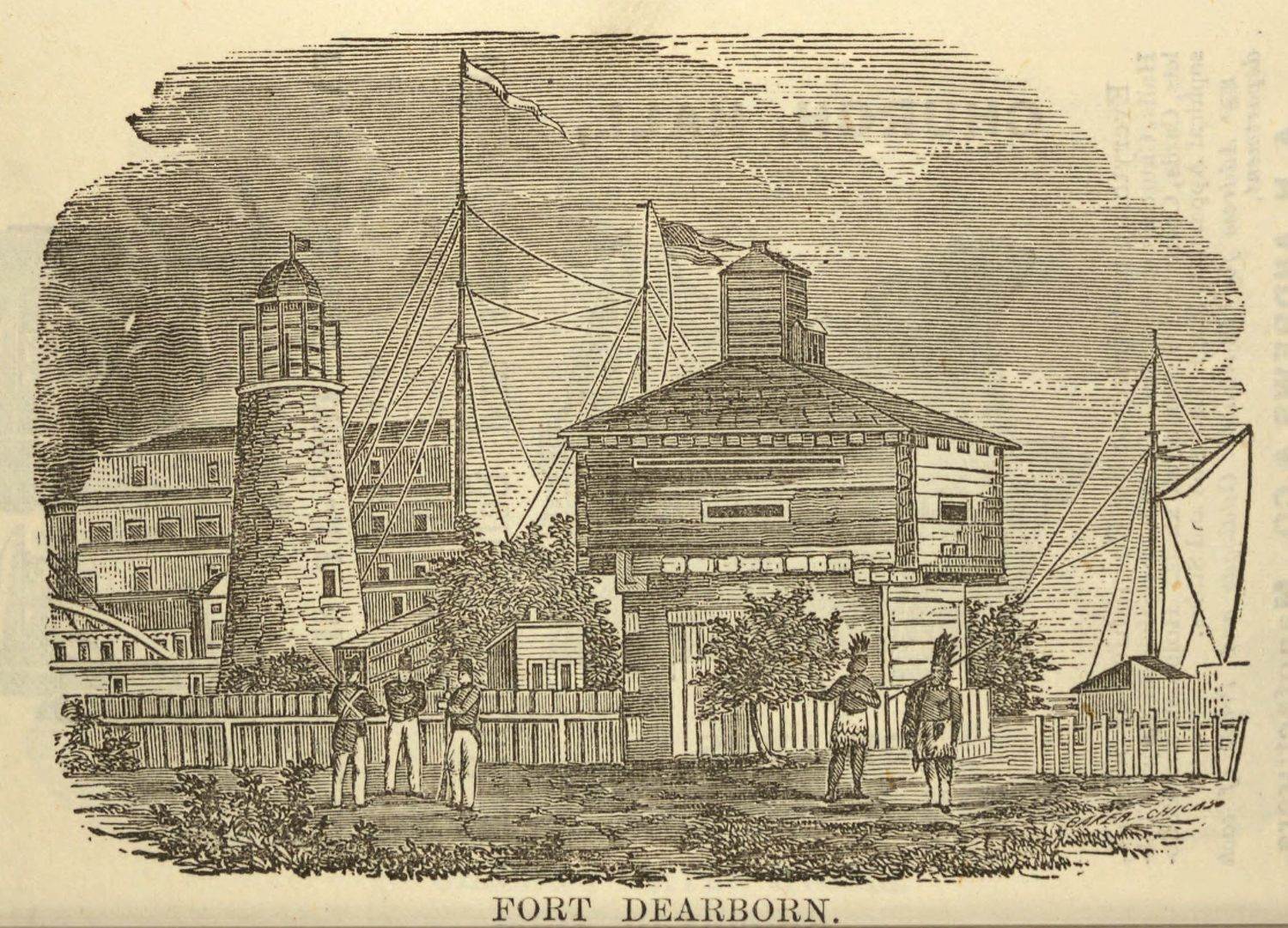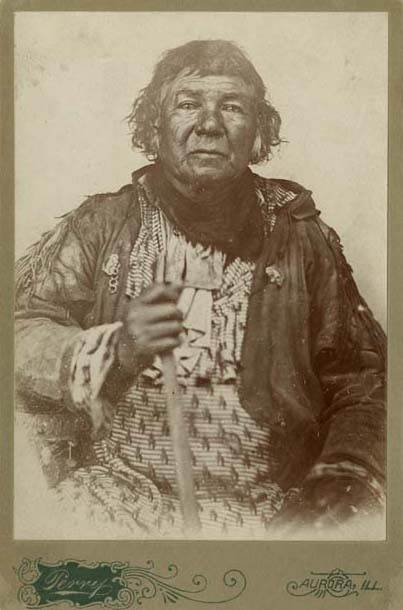By Dr. Jacob K. Friefeld
On February 3, 1809, Congress passed “An Act for dividing the Indiana Territory into two separate governments,” creating Illinois Territory with its capital at Kaskaskia. While the act created a place called Illinois and empowered James Madison to appoint Ninian Edwards as governor, in truth the area was controlled by Native tribes, as only about 12,000 Euro-Americans resided in the territory.
One year earlier, the U.S. government had completed the palisaded Fort Dearborn in modern day Chicago to protect the portage between Lake Michigan and the Illinois River, which did not yet connect. On maps, by law, and through a growing military presence the United States increasingly asserted its authority over the prairies, rivers, and lakes of Illinois.
 An 1869 depiction of the original Fort Dearborn. (The University of Illinois at Urbana Champaign Library)
An 1869 depiction of the original Fort Dearborn. (The University of Illinois at Urbana Champaign Library)
While there were few Euro-Americans in the Illinois Territory in 1809, U.S. expansion into American Indian lands had been prolific in the early 1800s. During these years, official U.S. policy had been one of “civilization” designed to obliterate Native cultures and turn Native people into yeoman farmers. The policy was largely unsuccessful and resented by many Indians who had no intention of giving up their culture. In the face of a declining fur trade and continued encroachment on their land, many Indians turned to the religious and political teachings of the Shawnee brothers, Tenskwatawa and Tecumseh.
Tenskwatawa preached against foreign control of Native life through trade and annuities (recurring payments often in exchange for land). He and his brother built an intertribal network against leaders who wished to give land to the U.S. In 1808, they founded their own settlement of Prophetstown, near the confluence of the Ohio and Tippecanoe Rivers in what is now Indiana, as the hub for their coalition. As the coalition’s political leader, Tecumseh crossed the Ohio River heading south in late summer 1811 to bring more Native tribes to the cause.
Before he left, Tecumseh urged the governor of Indiana Territory and future U.S. president, William Henry Harrison, to maintain the uneasy status quo in his absence. Instead, Harrison used a combined force of Indiana militia and regular army to march on Prophetstown, resulting in the Battle of Tippecanoe and the burning of the town.
The next year, foreign policy in North America combined with politics in the Atlantic World to ignite a war. After months of failure to overcome issues dealing with trade and the impressment of U.S. sailors into the British Navy, the U.S. declared war on Great Britain. Tecumseh allied his Native coalition with the British.
 A leader of the Potawatomi in Illinois, Shabbona fought with Tenskwatawa and Tecumseh against U.S. expansion in 1811 and 1812. This image is from 1859. (Abraham Lincoln Presidential Library and Museum)
A leader of the Potawatomi in Illinois, Shabbona fought with Tenskwatawa and Tecumseh against U.S. expansion in 1811 and 1812. This image is from 1859. (Abraham Lincoln Presidential Library and Museum)
On August 9, 1812, a message arrived at isolated Fort Dearborn in northern Illinois that ordered the garrison to evacuate over 300 miles to Detroit. Instead of leaving immediately, Captain Nathan Heald elected to wait nearly a week for a group of friendly Miami Indians to escort those at Dearborn as far as Fort Wayne. When they left the fort on August 13, a superior Native force almost immediately attacked them and burned Dearborn to the ground.
The organization of Illinois Territory in February 1809 is a link in a chain that led to Illinois statehood. It is also a story of North American international relations. The United States’s encroachment on territory already controlled by the Sauk, Fox, Potawatomi, Shawnee, and others combined with a war against Great Britain to spark a conflict that resulted in tragedy for many, including those who evacuated Fort Dearborn.
Friefeld is an ALPLM research historian specializing in Illinois and Midwest history.